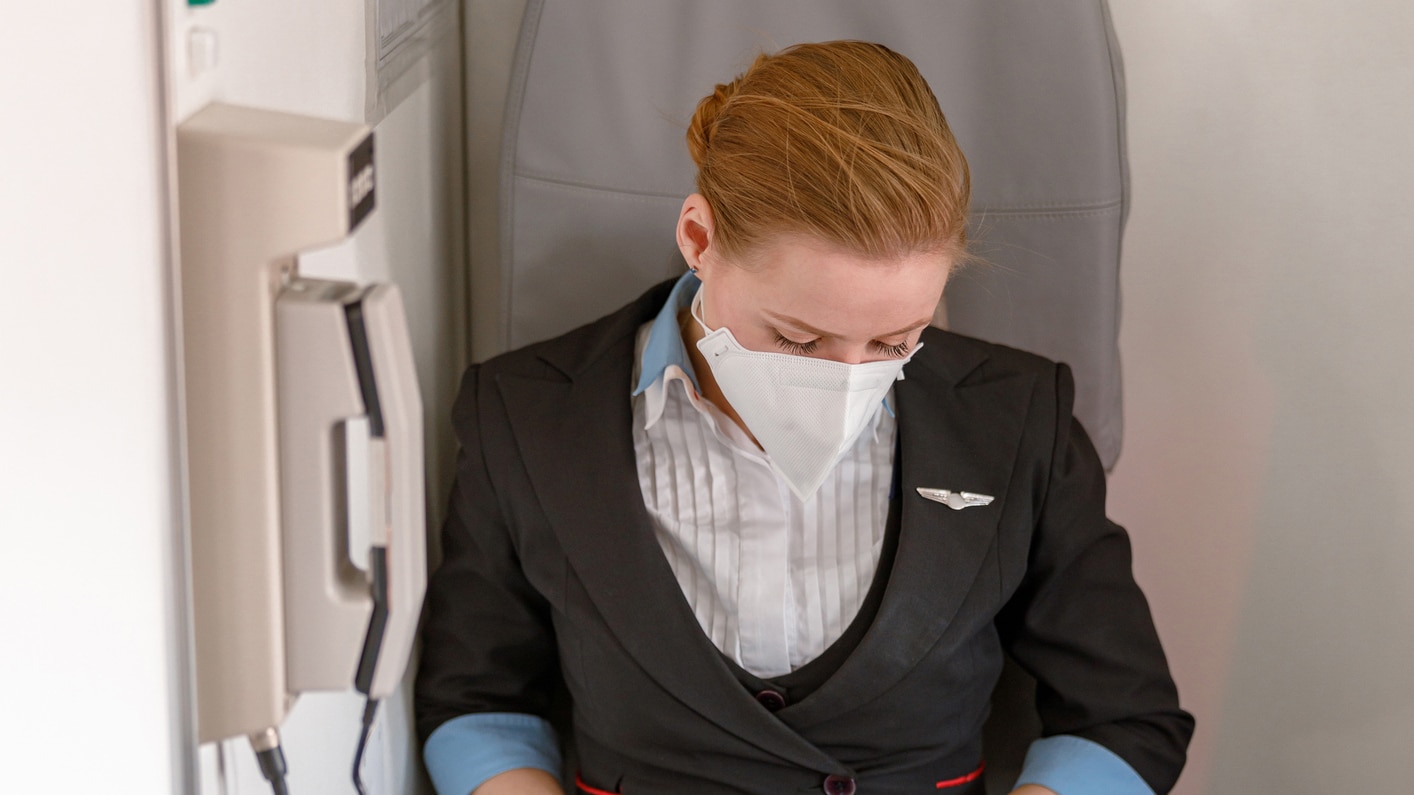Key points
- Aircrew can experience a “flight or fight” response from high workplace stress and demands, or in response to trauma.
- Your job performance and health may decline if your job stress is very high or lasts a long time.

Overview

What are job stressors?
Workplace conditions or events that cause job stress are called job stressors. Aircrew may face job stress from:
- occasional or repeated heavy job demands
- working long and irregular hours or sleep disruption
- job insecurity
- encounters with uncooperative or unpleasant passengers or co-workers/managers
- unpredictable schedule disruptions
- extended time away from home and loved ones
- traumatic events, such as in-flight emergencies or disasters
What types of job stress are there?
Acute stress
Acute stress can occur when job demands, pressures, or uncertainties are higher over a short period of time. This is generally followed by a return to low or more moderate levels. Examples include working back-to-back flights, flying during bad weather, or in-flight emergencies. The symptoms of acute stress are generally mild to moderate and temporary. They can include:
- physical and/or emotional tension
- digestive or sleep disturbances
- fear and anxiety
- irritability
- needing time to unwind after work before interacting
- sleep disturbance
Chronic stress
Chronic or prolonged stress can develop from experiencing heavy demands and pressures over an extended period of time. There may be little or no control over those demands, limited resources to meet them, and/or limited relief or "down-time." Symptoms of chronic stress can range from mild to high and are generally persistent. Those with chronic stress may experience symptoms associated with acute stress listed above, as well as:
- difficulty making decisions
- loss of interest in normal activities
- sleep problems
- feeling powerless
- difficulty with relationships
- feeling sad and having other symptoms of depression
Traumatic incident stress
Aircrew are responsible for passenger safety and must respond quickly to in-flight emergencies. Emergencies can be considered traumatic incidents if they involve damage to physical structures or spaces, injury, or death. Traumatic incident stress may occur at the time of the event or weeks or months later. It may include severe acute physical symptoms such as difficulty breathing, symptoms of shock, or chest pain that requires immediate medical attention. Visit the NIOSH traumatic incident stress topic page to learn more signs and symptoms.
What you can do
For employers
Just as it is necessary to design jobs to protect workers from toxic chemicals, jobs should also be designed to reduce worker exposure to job stressors. While some stressors cannot be eliminated, airline management should make extra efforts to identify, evaluate and implement work schedule practices that aid crewmember recovery following long flights. Programs should be developed to provide employees exposed to work-related traumatic incidents with mental health debriefings and to direct them to needed resources. Here is what managers can do to help reduce their crewmembers' job stress:
- Set fair and reasonable expectations.
- Clearly define workers' roles and responsibilities.
- Recognize and reward employee contributions.
- Permit employees to have a say and participate in decisions affecting their jobs
- Give workers opportunities to participate in decisions and actions affecting their jobs.
- Improve communication–reduce uncertainty about career development and future employment.
- Balance workload by ensuring adequate resources (staff, time) to accommodate flight demands.
- Design jobs to provide meaning, stimulation, and opportunities for applying skills.
- Permit work schedule flexibility to enable crewmembers to better balance job demands and responsibilities with those outside the job, including childcare.
- Establish and maintain an effective and proactive workforce protection program that is automatically activated for personnel involved in work-related traumatic incidents.
For employees
Times of stress can be overwhelming and may lead to pleasure-seeking in the form of unhealthy choices that may worsen the effects of stress. You can be proactive by taking steps to reduce the effects of job stress by finding support and making healthy choices. Evidence shows that supportive relationships can reduce stress levels, along with taking better care of yourself. Here are some things you can do
- Find support. Seek help from a trusted partner, family member, friend, counselor, or doctor.
- Consider using programs offered by your employer if available.
- Connect socially with others.
- Talk with your supervisor, union steward, or trusted senior member of your organization about conditions that may cause or aggravate stress.
- When discussing workplace issues, it may help to seek clarification about roles and priorities, available resources, and options for doing things differently that may not be apparent.
- Start routines that are comforting to you especially if you've been stressed or your schedule has been disrupted. For example, practice yoga or find other activities that may help you relax, such as a warm bath.
- Make time to do things that make you happy – even if for brief periods of time.
- Limit time spent watching television or in front of electronic devices.
- Choose healthier meal options and pack healthy snacks.
- Go for walks or exercise regularly.
- Get enough sleep.
- Avoid drugs and alcohol.
Resources
NIOSH Science Blogs
Web Pages
If you have safety and health questions about your job contact CDC-INFO.
